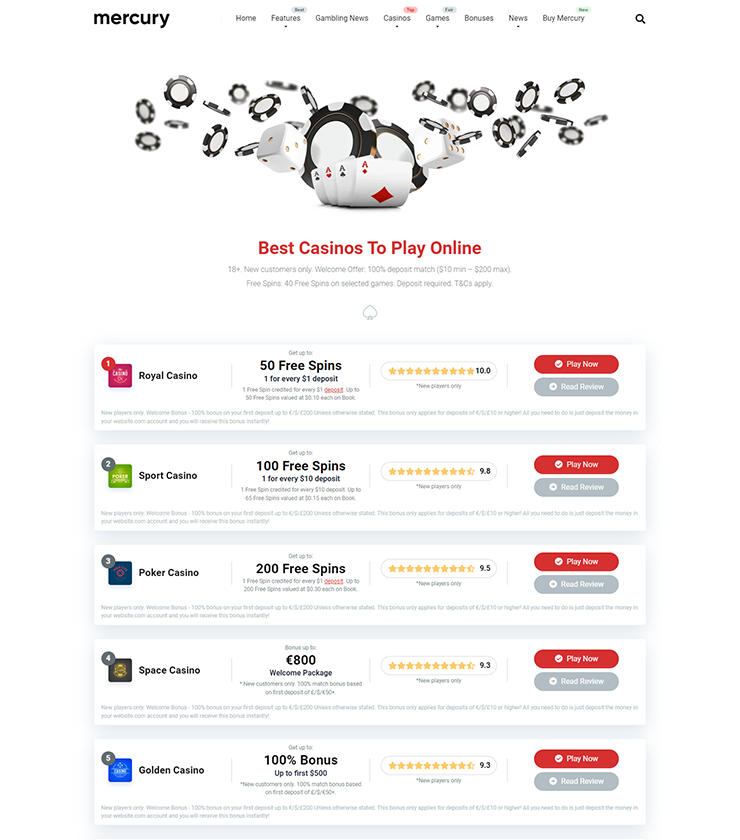
Anda telah menemukan permata keunggulan dalam bermain game dengan Top Demo Slot X500s, yang menampilkan game-game bernilai tertinggi yang dikenal karena grafis memukau dan fitur-fitur terbarunya. Slot ini menawarkan pembayaran yang mengesankan dan alur cerita yang seru, menjadikan setiap putaran sebuah pengalaman yang berkesan. Ada sebab mengapa para gamer sejati sangat menggemarinya, dan inilah saatnya Anda mengalami mengapa game-game menarik ini membuat pemain kembali lagi. Ingin tahu apa yang membuat slot ini benar-benar berkesan? slot gacor x500
Poin-Poin Utama
- Visual memukau dan mekanik responsif membuat Unggulan Demo Slot X500s menjadi pilihan terbaik untuk pengalaman bermain game yang imersif secara visual.
- Potensi jackpot yang besar dan rasio RTP yang tinggi memikat pemain yang mencari sesi permainan yang mendebarkan dan menguntungkan besar.
- Hadiah berubah dan alur cerita berinteraksi menawarkan peluang permainan yang segar dan menarik bagi pemain.
- Transisi yang halus dan interface yang user-friendly menjamin permainan yang mulus dan penambahan interaksi pemain.
- Narasi yang menarik dan pembangunan karakter menghasilkan pelarian yang seru, memikat imajinasi pemain.
Grafik Memukau yang Memikat Pemain
Bayangkan alam di mana setiap giliran reel slot membawa Anda ke dalam pengalaman visual yang menakjubkan. Itulah yang Anda alami dengan permainan Superior Demo Slot X500s.
Game-game ini tidak hanya bergantung pada nasib; mereka menawarkan perayaan bagi indra Anda melalui estetika visual yang hebat dan rancangan yang pitchbook.com mendalam. Visualnya bukan hanya tentang hue dan gaya—mereka adalah ajakan untuk keluar dari rutinitas sehari-hari dan merangkul sesuatu istimewa.
Setiap lambang penuh dengan energi, dan setiap langkahnya adalah sebuah ciptaan artistik. Anda tidak hanya mengetuk tombol; Anda terjun ke cerita menggetarkan yang dibuat oleh para desainer luar biasa.
Dengan tampilan grafis yang menawan bahkan pandangan yang paling awas, slot ini membiarkan Anda melepaskan diri dari kebiasaan dan menjelajahi dimensi baru.
Elemen Revolusioner Mengoptimalkan Permainan
Saat Anda menjelajahi ranah permainan Superior Demo Slot X500s, Anda akan langsung mengetahui bahwa bukan hanya visualnya saja yang membedakan permainan ini, tetapi juga elemen-elemen inovatifnya yang mengoptimalkan permainan ke level yang lebih tinggi.
Elemen-elemen ini membebaskan pengalaman bermain game Anda dengan:
- Struktur Responsif
- Lingkungan Imersif
- Keuntungan Dinamis
- Plot Partisipatif
Dengan aspek-aspek ini, Superior Demo Slot X500s merevolusi rekreasi, memberikan lebih dari sekadar slot konvensional.
Hadiah Mengagumkan yang Mengundang Anda Kembali
Dalam alam permainan percobaan, hanya sejumlah kesan yang semenarik mendapatkan jackpot, dan slot Superior Demo Slot X500s berjaya dalam menawarkan hadiah mengesankan yang mengundang Anda terus datang lagi.
Permainan ini dirancang dengan volatilitas besar, memastikan setiap putaran menawarkan potensi hadiah yang mengubah nasib. Anda tidak hanya bermain—Anda terlibat dalam tarian takdir, di mana setiap pertaruhan menawarkan kemenangan besar-besaran. Apa yang lebih menarik daripada menyadari Anda bisa meraih kekayaan kapan saja?

Kemungkinan jackpot inilah yang menyebabkan pemain terus kembali lagi dan lagi, menawarkan Anda keleluasaan untuk bermimpi dan mengejar kemenangan besar tersebut.
Imbalan yang berfluktuasi mengganti sesi permainan rutin menjadi petualangan yang mendebarkan, menjadikan kesan bermain game Anda tidak hanya berkesan tetapi juga sungguh-sungguh mengasyikkan.
Para Pemain Setia Memuji Game Favorit Ini
Permainan Slot Demo Superior X500s tidak hanya menarik Anda dengan hadiah besar yang mengesankan tetapi juga memberikan berbagai hadiah yang disukai banyak orang dan dihormati para pemain loyal.
Benamkan diri Anda dalam alam tempat taktik game dan review pengguna terwujud, menyediakan pemahaman yang membuat Anda selangkah lebih maju.
Berikut ini aspek yang paling digemari pemain:
- Gameplay Cepat
- Tingkat RTP (Return to Player) Besar
- Fitur Baru
- Rancangan yang Berpusat pada Pemain
Rasakan kebebasan menentukan dan perbaiki kesan bermain Anda dengan game kesukaan yang digemari ini.
Alur Cerita yang Menggugah Menambahkan Kedalaman Keseluruhan
Saat Anda menyelidiki dunia permainan Demo Slot X500s, alur cerita yang memikat mentransformasi putaran standar menjadi petualangan yang mengasyikkan.
Permainan ini menawan Anda dengan narasi yang mendalam, di mana setiap putaran menggerakkan kisah yang penuh dengan karakter memikat dan kejutan mengejutkan. Saat Anda terserap dalam cerita-cerita ini, Anda tidak hanya bermain; Anda mengungkap misteri dan melangkah ke dunia lain.
Kedalaman pembangunan karakter menyebabkan Anda ingin terus melanjutkan, karena setiap permainan membuka persona spesial dan latar belakang yang mendebarkan. Anda akan menemukan diri membela para pahlawan, menghancurkan penjahat, dan mengambil keputusan yang menuntun Anda pada petualangan tak terduga.
Interaksi dinamis ini membuka pengalaman bermain game Anda, mengubahnya menjadi petualangan yang penuh potensi dan kemerdekaan. Benamkan diri Anda, dan perkenankan ceritanya mengantarkan Anda ke dalam petualangan.


















